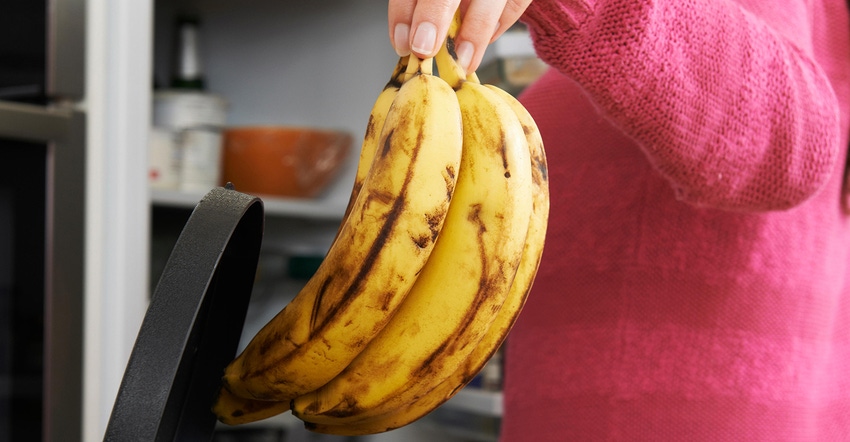Q&A with EPA Associate Chief Lana Suarez: Food Waste Prevention Tools and Solutions
Lana Suarez, associate chief, U.S. EPA, takes time to answer questions about food waste and prevention methods

A quick Google search will give anyone some alarming facts about food waste and the total loss that it is for the United States.
About one-third of food intended for human consumption is wasted or lost every year, which is about 1.3 billion tons. Luckily, awareness on the ongoing food waste issue is rising every year and tons of companies and individuals are taking steps to help divert food from landfills and fight insecurity.
Lana Suarez, associate chief at the EPA, took the time to answer some questions from Waste360 ahead of the Federal Food Loss and Waste Reduction Initiatives panel at WasteExpo about the state of food waste in the United States, tools that her agency has available for food loss prevention, what federal funding currently looks like for the issue, and more.
Waste360: What is the current state of food waste in the United States?
Suarez: EPA recently released the 2019 Wasted Food Report, which provides estimates for 2019 on the generation and management of wasted food in the U.S. for the food retail, food service, residential, and food manufacturing and processing sectors. It also includes estimates of how those sectors manage their wasted food.
EPA estimates that in 2019, 66.2 million tons of wasted food was generated in the food retail, food service, and residential sectors. Of this, 40% was from households, 40% was from food service providers, and 20% was from food retail. Most of this waste (59.8%) was landfilled. An additional 40.1 million tons of wasted food was generated by the food manufacturing and processing sectors. The biggest proportion of this food manufacturing and processing waste (42.6%) was managed by anaerobic digestion.
The report also contains information on progress toward the national goal to reduce food loss and waste by 50% by 2030. For food waste, this goal aims to cut in half the amount of food from the food retail, food service, and residential sectors that has been removed from the human food supply chain compared to a 2016 baseline of 328 pounds per person. In the three years between the baseline (2016) and the latest national data (2019), there was a slight increase of 6% (from 328 pounds to 349 pounds per person).
Waste360: What efforts have been made in the past five years/decade to reduce waste and fight food insecurity?
Suarez: EPA’s work has focused on accelerating the prevention of food waste and recycling of organic waste.
The From Farm to Kitchen: Environmental Impacts of US Food Waste (November 2021) details the environmental impacts of food waste starting with production up to and including consumers.
While increasing the recycling of organic materials is critical, 85% of GHG emissions from landfilled food waste happen before waste disposal.
Waste360: Can you please preview some tools your agency has available for food loss prevention/waste reduction?
Suarez: Model Recycling Program Toolkit: EPA recently released an interactive collection of EPA and other materials to help states, territories, local governments, tribes, schools, nonprofit organizations, companies, and public-private partnerships create effective programs for recycling, composting, anaerobic digestion, reuse, repair, and waste reduction. Materials in the toolkit can help communities increase participation in recycling programs and reduce contamination in the recycling stream.
Excess Food Opportunities Map: An updated Version 3 will be released later this year with additional functionality by bringing in EJ Screen data, USDA food access and food assistance data, refrigerated warehousing and storage infrastructure, farmer’s markets and updated data for all generator and recipient data layers.
Waste360: Briefly describe a federal effort that will be highlighted during the session.
Suarez: EPA’s consumer education efforts this year are led by the need for a national behavior change campaign to help consumers waste less food.
EPA will share more on the development of a blueprint laying out recommendations and an approach for developing and implementing a national food waste prevention behavior change campaign.
Waste360: What does federal funding currently look like for this issue – specifically the 2024 and future budgets?
Suarez: Several offices at EPA have programs and research efforts that focus on reducing food waste, including our Offices of Land and Emergency Management; Research and Development; Air and Radiation; Water; and Chemical Safety and Pollution Prevention. Food loss and waste activities are typically funded as part of larger programs.
The Bipartisan Infrastructure Law has provided unprecedented funding ($350,000,000 total from Fiscal Year 2022 to Fiscal Year 2026) to support state and local waste management infrastructure and recycling programs.
Waste360: What are some key takeaways attendees will learn from your participation in the session?
Suarez: We still have a long way to go, and more investment is needed to meet the national goal to reduce food loss and waste by 50% by the year 2030.
EPA, through its networks and collaborations, will continue to promote the value of food as a resource that should not be wasted.
Hear more from Lana Suarez, Associate Chief, Materials Management Branch, U.S. Environmental Protection Agency, at WasteExpo in New Orleans during the session: Federal Food Loss and Waste Reduction Initiatives
About the Author(s)
You May Also Like




